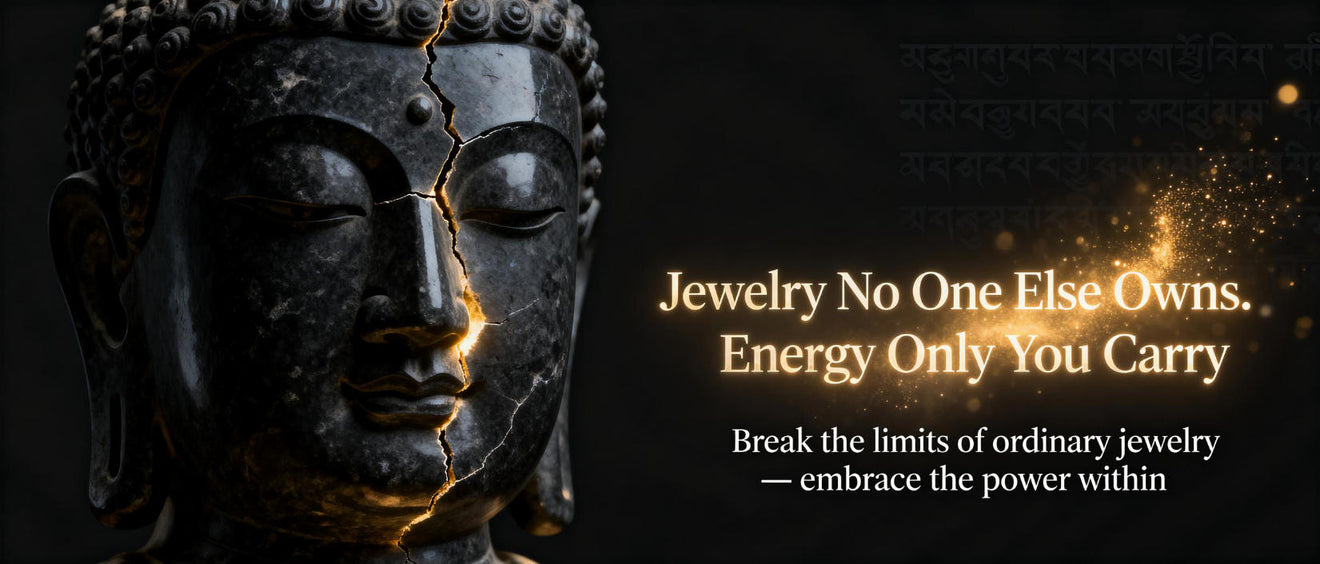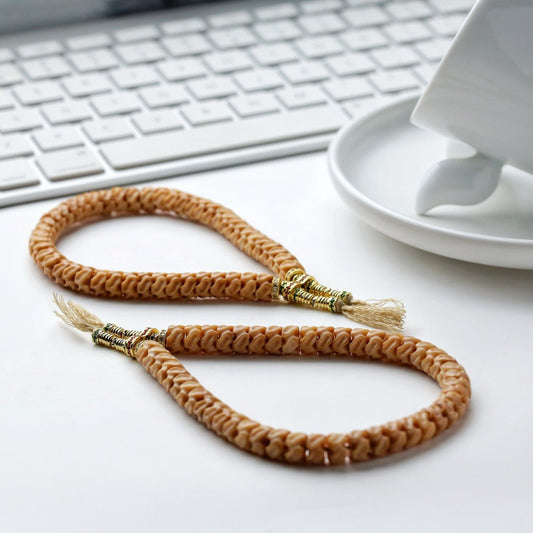uniquely dyed Buddha belief themed bracelet designs?

Within the meticulous design of Tibetan Buddhism exist a pair of significant objects: the detailed thangka and symbolic bodhi ornament. Each, consistently, in defined style, bridges connections to sacred insight. The thangka, a vibrant painting, depicts deities, mandalas, or scenes from Buddhist lore, acting as a visual aid for meditation.
Conversely, the bodhi bead, often crafted from exquisite rocks, hardwood, pods, or skeletal fragments, is a tangible reminder of Buddha's enlightenment under the bodhi tree. Clutching the beads in contemplation anchors consciousness.
- Collectively, the thangka and the bodhi bead express the synergy between expression and belief. They offer a tangible link to the eternal truths of Tibetan Buddhism.
Tales Whispered by Camel Bone
Amidst long-forgotten periods, age-old treasures whisper tales regarding a world long lost. These are not ornate objects of bygone empires, but plain camel bones engraved with symbols that harbor the enigmas of a bygone phase. Single shards carry the echo in a life lived, a journey followed, and a connection to the hallowed wisdom within which includes us all.
- Those
- Elements
- Are
Unlocking the Symbolism within Thangka Masterpieces
Tangkas are eye-catching paintings on canvas, meticulously crafted by Tibetan artists to depict divine figures and scenes from Buddhist philosophy. Each detail within a thangka is laden with symbolism, forming a complex tapestry of visual narratives that guide the viewer on a contemplative journey. The chromatics used in thangkas are not merely aesthetic choices but carry profound connotations, exemplifying different aspects of the Buddhist path. From the serene figures to the intricate textures, thangkas offer a view into the rich world of Tibetan Buddhism, inviting us to study upon its knowledge.
- Historical thangka art often depicts key Buddhist figures such as Buddha Shakyamuni, Bodhisattvas like Avalokiteshvara and Manjushri, and enlightened beings from various lineages of Tibetan Buddhism.
- Through these representations lies a wealth of understanding that can be understood by those who explore the symbolic language of thangkas.
Enlightened One's Path to Enlightenment: Embodied in Beads and Bone
Upon the winding path to awakening, the Buddha adopted signs imbued with profound depth. Individual bead and object held within them the quintessence of his transcendent vision, exhibiting glimpses into the structure of reality. Using their figure, the Buddha articulated profound revelations that exceed the realm of mundane perception.
From these reflective beads, crafted from special materials, emerged vibrations that aligned with the subtle powers within. The material of a existence, meticulously transformed into tokens, served as tangible guides of the impermanence constitutional to all beings.
Thangkas: Windows into Himalayan Spirituality
Thangkas luminous paintings on cloth serve as dynamic representations of Himalayan spirituality. These intricate works of art, meticulously created with delicate brushstrokes, depict a vast array upon Buddhist deities, mandalas, and scenes from venerable scriptures. Each thangka is a contemplative aid for meditation and contemplation, offering cognition into the multifaceted teachings of Buddhism.
- They are often used in ritual ceremonies for
- manifesting states of spiritual transcendence.
- Thangkas serve as not merely decorative items but rather views into the rich and mesmerizing world of Himalayan spiritual traditions.
Bodhi Beads: Embracing Mindfulness and Cultivating Compassion
Each unit on a bodhi bead mala whispers tales of ancient wisdom, guiding us on a journey through the tranquil waters of mindfulness. As we grasp these intricately fashioned beads, our fingers trace the contours of individual one, anchoring our consideration in the present moment. The gentle density of the beads against our palms serves as a tangible reminder to take a breath, fostering a sense of composure.
- With every bead that passes between our fingers, we promote compassion, extending it first to ourselves and then outward to the world.
- Eastern religions teaches us that mindfulness is a ability that requires patience and dedication.
Utilizing the rhythmic repetition of mantra or simply the mindful tallying of the beads, we detach from the relentless chatter of the mind.
The practice involving bodhi beads is a refined invitation to reawaken our connection with ourselves and the world around us.
The Power of Intention: Crafting a Camel Bone Bracelet for Spiritual Growth
Intention is a powerful force in our lives, shaping our experiences and guiding us towards our destined path. When we combine this intention with the ancestral experience of crafting a camel bone bracelet, we create a potent synergy that can intensify our spiritual growth.The camel bone itself is symbolically rich, representing fortitude. Its natural beauty and perennial fascination serve as a constant reminder of the divine force within each of us.By scrutinizing each piece, pour intentions into the design. With every knot or connection, we insert our hopes, dreams, and aspirations for spiritual evolution. This act of creation becomes a powerful affirmation, synchronizing us with our inner wisdom and guiding us on a journey of self-discovery.- Let the natural hues and textures of the bone guide your vision.
- Feel the energy flowing through your hands and into the creation.
- Expose it to elements to empower its sacred presence.
Camel Bone's Role in Buddhist Iconography
In the rich tapestry inside Buddhist tradition, artifacts often hold profound symbolic meaning. Across these varied objects, camel bone stands out as a exceptional and captivating element. Throughout history, this material has been employed in the crafting during various Buddhist relics, each imbued with specific meanings.
- Considered as a symbol of resilience and strength due to the camel's ability to withstand in harsh environments, camel bone often embodies spiritual fortitude.
- Additionally, the color and texture relative to camel bone are believed via some to hold auspicious connotations, representing purity and serenity.
Accordingly, camel bone has become a treasured part of Buddhist heritage, serving as a tangible tie to the profound teachings within this ancient faith.
Thangka Works: Stories of the Divine
Within the ethereal realm of Tibetan Buddhism, Thangka paintings emerge as sacred portals to enlightenment. These remarkable works, meticulously crafted by skilled artists known as thangkapa, depict a myriad including vibrant deities, celestial beings, and mythical creatures. Each brushstroke infuses profound spiritual significance, narrating ancient tales and philosophical principles.
- Displaying a vast group of Buddhist iconography, Thangkas serve as both devotional objects and instructional tools. Devout practitioners gaze upon these paintings during rituals and meditations, seeking to develop spiritual wisdom.
- Intricately adorned with intricate details and vibrant hues, Thangkas are considered windows into the divine. Any painting acts as a symbolic representation of the Spiritual Leader's teachings and the path to liberation.
Through their striking imagery and symbolism, Thangka paintings offer a glimpse into the rich doctrinal traditions of Tibet. They are a testament to the enduring mastery of Tibetan art and its profound ability to motivate.
Embracing the Duality: Thangkas and the Cycle of Life and Death
Thangkas, these vibrant woven scrolls from Tibet, offer a profound reflection on the transient nature of existence. Each intricate illustration depicts deities and beings engaged in the continuous path of life and death, a symphony of birth, growth, impermanence, and renaissance. The artists skillfully combine these concepts within the thangka's realm, highlighting the linkage of all things. Through vivid icons, they invite us to contemplate on our own presence. The cycle revolves, a progression of coming and going, stressing the preciousness of each moment. By embracing this duality, thangkas teach us to appreciate the beauty in both life's joys and sorrows.Bonds of Serenity: The Significance of Bracelets in Buddhist Practice
In the intricate tapestry of Buddhist practice, seemingly straightforward objects often hold profound meaning. Among these are bracelets, which serve as tangible representations of devotion and commitment to the philosophy of Buddha. Worn on the wrist, a bracelet works as a constant reminder of one's aspirations and goals. It can indicate the impermanence of life, motivating practitioners to remain present in the present moment. Some bracelets may harbor sacred characters, such as mantras or the names of Buddhas, which are perceived to channel positive energy and guard. Others tend to be made from substances with spiritual significance, like sandalwood or lotus seeds, amplifying the bracelet's power. Ultimately, the significance of a Buddhist jewelry Buddhist bracelet exists far beyond its physical form. It becomes a powerful tool for reflection, a inspiration to live in harmony with the teachings of Buddha, and a channel of one's unwavering loyalty.